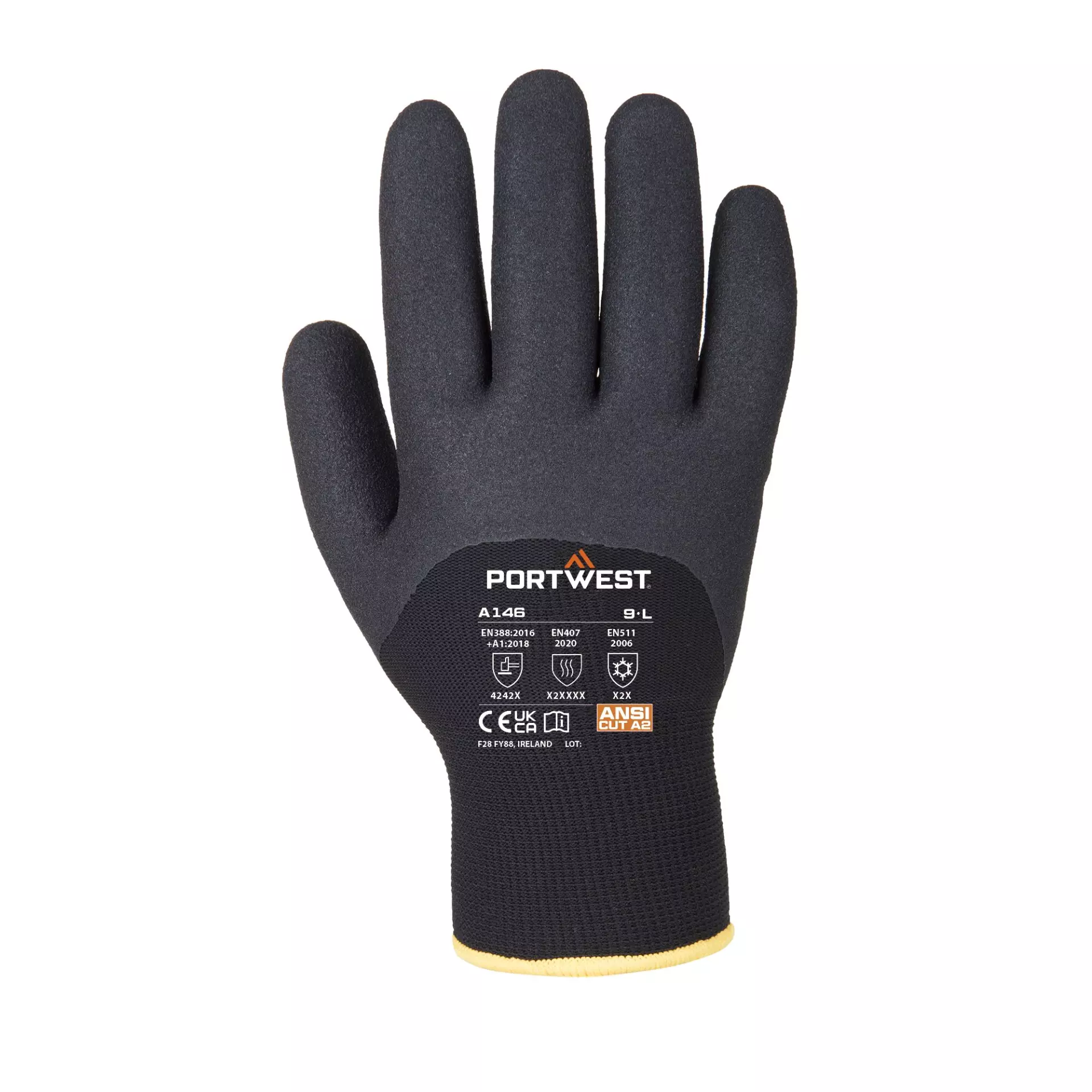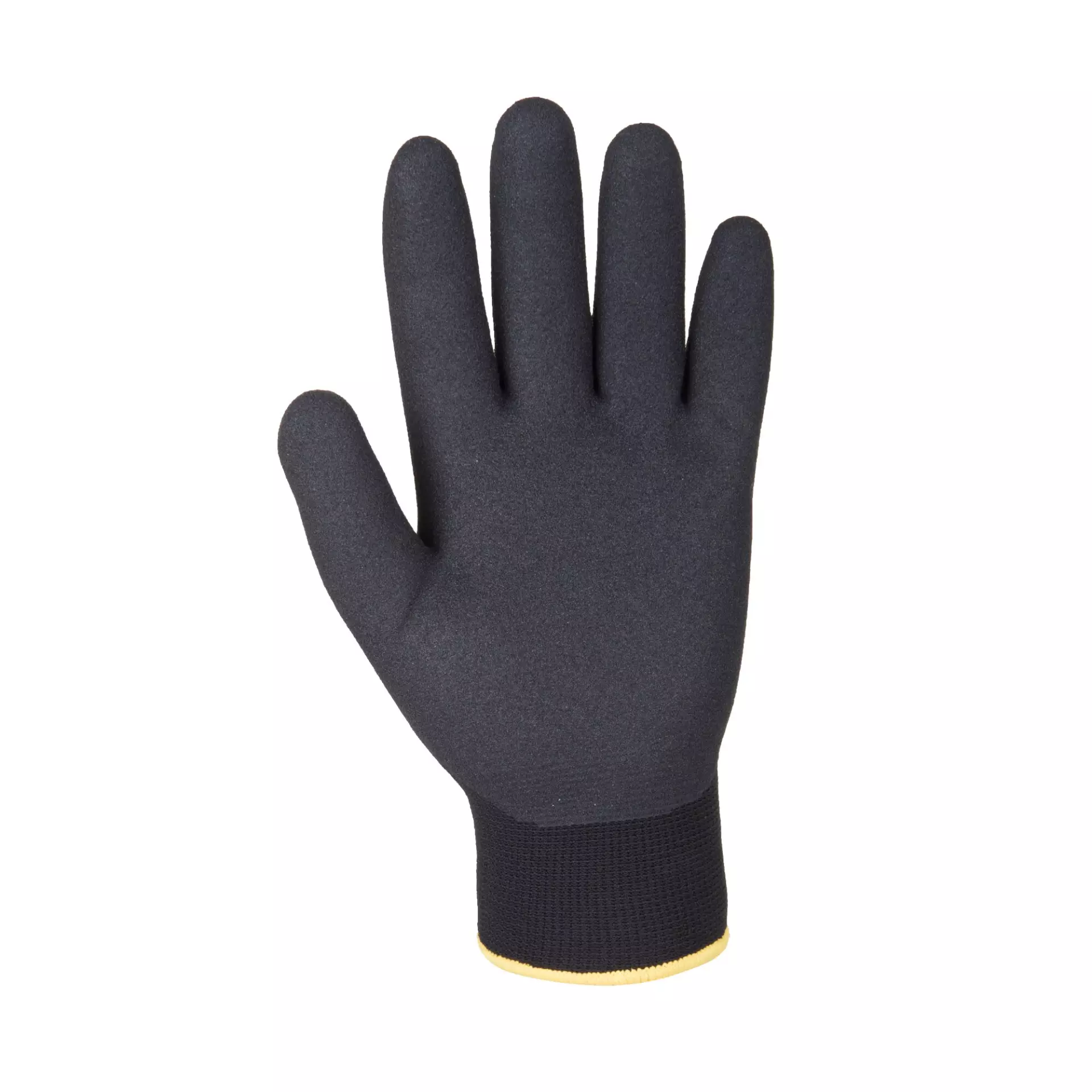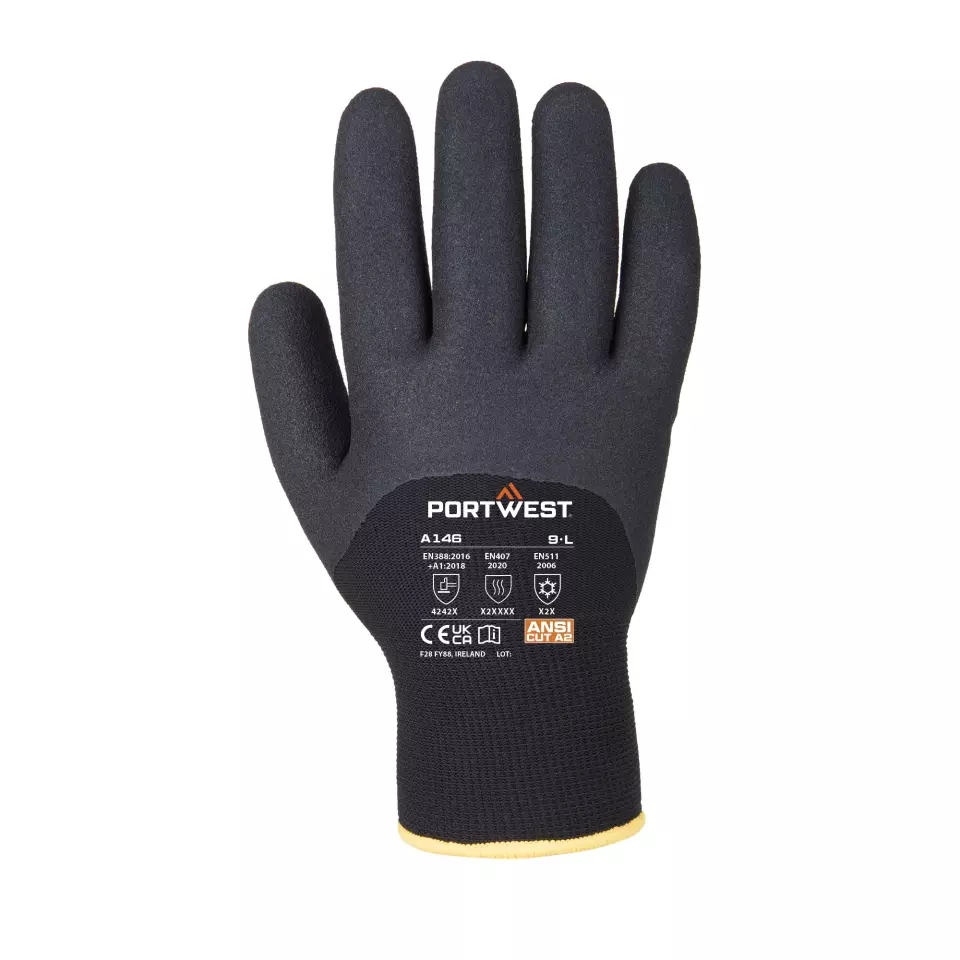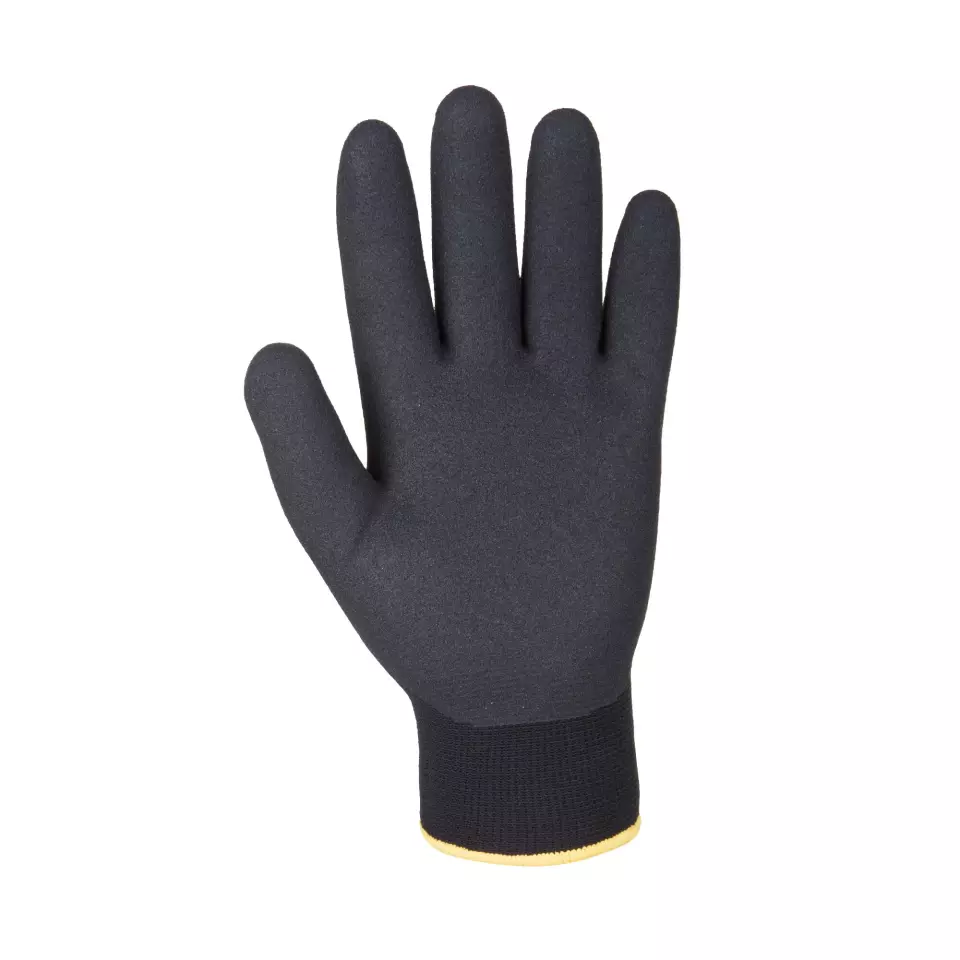


Features You'll Love

Liner Style · Insulated
EN 407 · Heat Contact Level 2
EN 511 · Cold Contact Level 2
The inner lining or coating that affects comfort, grip, insulation, and protection against chemicals or allergens.
This product provides protection from contact heat up to 250°C for at least 15 seconds. It is ideal for tasks where you might briefly handle hot items, such as in kitchens or workshops.
This glove provides good insulation when directly handling cold objects for a moderate duration. It's ideal for tasks like working in cold stores or handling chilled or frozen items, offering a solid mid-range of thermal protection.

Grip Finish · Sandy
The surface texture or coating on the palm and fingers that determines how securely the gloves can grip tools, materials, and surfaces during work tasks.

EN 388 · Abrasion Resistance Level 4, Tear Resistance Level 4, Puncture Resistance Level 2
Offers the highest level of protection against intense rubbing and wear from rough materials.
Offers the highest level of protection against tearing, withstanding a strong force before ripping.
Withstands moderate force from sharp objects like heavy-duty splinters or wires.
Portwest
Arctic Winter Glove, Black, 12 pairs
Arctic Winter Glove, Black, 12 pairs
4.8 / 5
77,48 €
Price per 12 pairs
6,46 € / pair
Choose size
Free delivery
Features You'll Love

Liner Style · Insulated
EN 407 · Heat Contact Level 2
EN 511 · Cold Contact Level 2
The inner lining or coating that affects comfort, grip, insulation, and protection against chemicals or allergens.
This product provides protection from contact heat up to 250°C for at least 15 seconds. It is ideal for tasks where you might briefly handle hot items, such as in kitchens or workshops.
This glove provides good insulation when directly handling cold objects for a moderate duration. It's ideal for tasks like working in cold stores or handling chilled or frozen items, offering a solid mid-range of thermal protection.

Grip Finish · Sandy
The surface texture or coating on the palm and fingers that determines how securely the gloves can grip tools, materials, and surfaces during work tasks.

EN 388 · Abrasion Resistance Level 4, Tear Resistance Level 4, Puncture Resistance Level 2
Offers the highest level of protection against intense rubbing and wear from rough materials.
Offers the highest level of protection against tearing, withstanding a strong force before ripping.
Withstands moderate force from sharp objects like heavy-duty splinters or wires.
Product description
Professional protective gloves featuring a twin liner design that traps heat for enhanced warmth in cold conditions. The 3/4 nitrile sandy dipping provides superior finger protection and liquid resistance, while the open back design ensures breathability. With contact heat protection up to 250°C for 15 seconds and a 15-gauge liner construction, these gloves deliver optimal dexterity and durability for demanding industrial applications.
Product Features:
- Twin liner traps heat through increased insulation
- 3/4 dipped design for increased protection to fingers
- Open back for enhanced breathability
- Flexible sandy nitrile coating offers excellent grip in wet and dry conditions
- 15 gauge liner provides optimal balance of dexterity and durability
Technical Details:
- Contact heat protection up to 250°C for 15 seconds
- Specially designed for use in cold conditions
- Breathable seamless liner construction
- Low linting construction for minimal contamination
- Superb abrasion and tear resistance
Standards:
- EN ISO 21420: 2020 Dexterity 3
- EN 388: 2016 + A1: 2018 (4242X)
- EN 407: 2020 (X2XXXX)
- EN 511: 2006 (X2X)
- ANSI/ISEA 105: 2016 CUT Level (A2)
- ANSI/ISEA 105: 2016 ABRASION Level (3)
- OEKO-TEX® STANDARD 100 approved
- CE certified